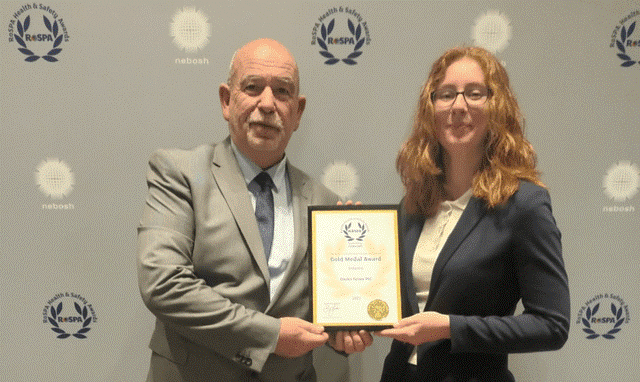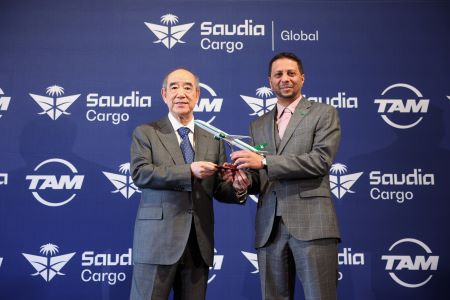The process of transporting essential elements to offshore wind farms as breakbulk cargo requires thorough planning and highly trained professionals, ITM Editor Joseph Clarke investigates
Breakbulk transportation involves the shipment of cargo that is too large or too heavy to be loaded directly into standard shipping containers. As this is often the case in the offshore wind industry, breakbulk transportation plays a significant role, especially during the construction and maintenance phases of offshore wind farms. Given that the wind farms are often located far from the shore, in open waters, as well as the fact that the materials needed are extremely heavy and oversized, several logistical challenges arise and must be tackled efficiently by breakbulk professionals.
As offshore wind farms rely on a range of massive components – including wind turbine parts such as tower sections, nacelles, rotor blades, and foundations, which are too large or heavy to fit into standard shipping containers – specialised breakbulk transport vessels are required. Unlike standard vessels, these ones are equipped with heavy-lift cranes and specialised handling equipment to move oversized items from manufacturing facilities to offshore installation sites.
In addition to transporting wind turbine components, breakbulk transportation is crucial for moving foundations like monopiles or jacket structures to their designated installation locations. Moreover, it handles the transportation of substation equipment and undersea cables, which are essential for connecting the offshore turbines to the onshore power grid.
But the role of breakbulk transportation extends beyond merely moving components. It also entails intricate project planning and logistics. Factors such as weather conditions, vessel availability, port facilities, and transportation schedules must be carefully considered to ensure the timely and safe delivery of components to their intended locations. In other words, breakbulk transportation is very complex and is dependent upon specialised vessels and equipment, highly trained professionals, and a very thorough planning process to overcome possible challenges and mitigate risks.
Heavy-lift vs. Installation vessels
Transporting breakbulk cargo to offshore wind farms relies significantly on specialised vessels that are equipped with heavy-duty cranes, dynamic positioning systems, and the essential tools for securing, lifting, and safely transporting these massive components. These vessels, known as heavy lift vessels, are central to the construction, maintenance, and decommissioning of offshore wind farms, equipped to navigate the unique challenges presented by the harsh marine environment.
Their primary function revolves around the transportation of various wind turbine components, including tower sections, nacelles, blades, and various hardware, from manufacturing facilities or storage yards to the offshore installation sites. Beyond transportation, these vessels are not mere carriers; they are equipped with powerful cranes capable of precision hoisting and accurate placement of heavy turbine components and foundation structures, including monopiles, jackets, or suction bucket foundations.
Heavy lift vessels are also used for assembling wind turbines at sea, which minimises the need for complex onshore assembly processes – a particularly valuable advantage for larger offshore turbines. Their role extends even further as they can also be used to cover maintenance and repair tasks, providing the means to transport technicians and replacement parts to offshore wind turbines, facilitating essential repairs and component replacements, thereby ensuring the continued operation of the wind farm. Inevitably, as offshore wind turbines have a finite operational lifespan, heavy lift vessels also play a crucial role in the decommissioning process. They are responsible for removing turbines and their associated components when they reach the end of their operational lives, effectively concluding the chapter of these structures at sea.
In addition to their turbine-related functions, heavy lift vessels are often involved in the laying of submarine power cables, linking offshore wind turbines to onshore substations, where the generated electricity is converted and connected to the onshore grid. They are then also relied upon for the installation of offshore substations, which are critical for electrical conversion and connection; and contribute to the efficient transfer of electricity to the onshore grid.
Then, there are installation vessels, which have distinct roles to heavy-lift vessels. Their primary functions include the precise installation and assembly of wind turbines, foundations, and associated equipment. The vessels are specifically equipped for on-site assembly, handling the transportation of components, and using specialised equipment, such as heavy-duty cranes, to ensure precise placement and attachment in the challenging offshore environment.
Installation vessels also boast a comprehensive set of tools and machinery designed for offshore wind farm tasks, enabling them to handle the positioning and attachment of wind turbine components, foundations, power cables, and even offshore substations. Additionally, many of these vessels feature jack-up systems that elevate their hulls above the water level for added stability during installation operations, which is particularly useful in rough seas.
In terms of scope, installation vessels have a more extensive range of tasks compared to heavy-lift vessels and can therefore be involved in a multitude of activities, including the installation of wind turbines and their components, foundations, power cables, offshore substations, and even decommissioning activities; making installation vessels versatile and indispensable assets in the offshore wind industry.
Planning and mitigating risks
Kasper Heiselberg, Head of Global Wind Renewable Industry at deugro advises that “the key aspect of successful project execution in offshore wind is flawless, detailed planning. Not only technically, but also commercially entailing accounting, insurance and many other assessments throughout the project’s lifetime. This goes through the entire value chain of the offshore wind business—from early ingenuity and technical engineering support to factory production load plans and the day-to-day installation schedule, to, ultimately, the project handover to the client.”
First and foremost, the planning process for transporting breakbulk cargo to offshore wind farms must begin with a project assessment and coordination phase, where the scope of the project is defined. This includes determining the quantity and type of breakbulk cargo to be transported, establishing a delivery schedule, and creating an installation plan. Typically, a project management team will be assigned to coordinate the transportation and installation processes, as they are trained and experienced to do so.
The next step involves a detailed assessment of the breakbulk cargo, taking into account factors such as dimensions, weight, and any special handling needs; and the cargo’s compatibility with available transportation methods and vessels needs also to be considered at this stage. Then, once the cargo requirements are clear, route planning becomes a crucial element of the process, which includes identifying the optimal transportation route to the offshore wind farm, while taking into account factors such as distance, sea conditions, navigational challenges, and regulatory restrictions.
As previously mentioned, selecting the right vessel is of utmost importance, and is a pivotal decision in the planning process. The choice of vessel type is based on the cargo specifications and the chosen route, with specialised vessels like heavy-lift or installation vessels, barges, or other appropriate ships being selected. Obviously, it is essential to ensure that the chosen vessel has the necessary equipment, such as cranes or lifting gear, to handle the breakbulk cargo effectively.
Once the vessels have been appropriately selected, the load planning and stowage phase comes into play, in which a comprehensive plan is created that will maximise cargo efficiency and ensure safe stowage. During this stage, weight distribution, securing methods, and any special requirements for cargo protection are carefully considered, as safety and compliance are paramount in the transportation of breakbulk cargo. Adherence to safety regulations and compliance standards is crucial, including securing cargo to prevent shifting during transport and ensuring proper documentation and permits. To prevent dangers like these from occurring, proper lashing and securing methods are employed to prevent cargo movement and damage during transit. Furthermore, inspections must be carried out to verify the integrity of securing systems and ensure that the cargo remains safe and intact.
Adequate insurance coverage is arranged to protect the cargo during transportation against potential loss or damage. Finally, a risk assessment is conducted to identify potential risks and develop contingency plans to address unforeseen issues that may arise, such as equipment failure or weather-related delays. After the cargo reaches the wind farm site, post-transport inspections are performed to ensure the cargo is in good condition and ready for the installation phase of the wind farm project. The successful transportation of breakbulk cargo to offshore wind farms demands meticulous planning, close coordination among various stakeholders, and a strong focus on safety and compliance with regulations. This process ensures that the essential components reach their destination on time and in optimal condition for the installation phase of the wind farm project.
As Hagen Hennig, Technical Director, dteq Transport Engineering Solutions, states: “In offshore installation, weather limits are also determining factor, influencing when and how efficient the installation vessels can work. The logistics and, ultimately, technical concept need to ensure that the available weather windows are used by reducing the time a installation vessel is traveling for pick-up, loading and securing the cargo—always focusing on the highest QHSES standards.”
Finally, ensuring the vessel’s crew is trained in the handling and safe transportation of breakbulk cargo is also a critical part of the planning process. Crew members need to be knowledgeable about proper securing techniques to prevent accidents and cargo damage.
Kasper Heiselberg at deugro, adds:“The coming years will put even further pressure on the shipping capacity, which has been felt in the past month not only in the container field, but also in the heavy lift market. With the expanding volume in the offshore wind industry, it will likely call for further capacity in the years to come. Along with the difficulties of the installation companies to design and build the next generation of installation vessels considering future requirements, it is challenging to predict and prepare for future requirements for transport and shipping in the development of the industry.”
A case study: The Northwind Offshore Wind Farm
The Northwind Offshore Wind Farm is a substantial renewable energy project situated off the Northern European coast. It encompasses numerous wind turbines aimed at generating clean energy. A pivotal breakbulk project within this venture involved the transportation and installation of wind turbine components to facilitate the farm’s construction and operation.
The wind turbine components, including steel towers, hefty nacelles (containing the generator and essential components), and oversized rotor blades, were manufactured at various locations across Europe. Due to their considerable size and weight, these components were unsuitable for standard containerised shipping. Instead, specialised breakbulk vessels were employed to transport these oversized items. These vessels are equipped with specialised cranes and equipment designed to handle such heavy and large cargo.
The logistics of the breakbulk project included the careful loading of these components onto vessels at various European ports. This task required the use of cranes and rigging equipment to hoist and securely fasten the components onto the ships. After loading, the breakbulk vessels set sail for the Northwind Offshore Wind Farm site, located a significant distance offshore. Navigation planning was meticulous, ensuring adherence to maritime safety regulations.
Upon arrival at the offshore wind farm site, specialised installation vessels came into play. These vessels were responsible for offloading the components and expertly installing them onto the pre-prepared foundations already positioned on the seabed. The installation process was precise and involved the use of crane barges and skilled offshore personnel.
The successful transportation and installation of all wind turbine components marked the completion of the Northwind Offshore Wind Farm project in 2013 and resulted in the operational status of the renewable energy project, generating clean electricity and contributing to the reduction of carbon emissions.
This project exemplifies a well-executed breakbulk operation in the context of offshore wind energy, underlining the complexity of logistics and the precision required for bringing together and installing the essential components of wind turbines at sea. Such endeavours are instrumental in expanding renewable energy sources and reducing dependence on fossil fuels.
Final remarks
The transportation of breakbulk cargo to offshore wind farms is a remarkable engineering achievement. It involves a combination of specialised vessels, rigorous planning and an unwavering commitment to safety. As offshore wind farms continue to grow in prominence as a source of clean, renewable energy, the successful transportation of breakbulk cargo remains a crucial part of the industry’s success. With advances in technology and logistics, the future promises even more efficient and sustainable methods for bringing wind energy to the deep sea, contributing to a greener planet.
Read more news and exclusive features in our latest issue here.
Never miss a story… Follow us on:
International Trade Magazine
@itm_magazine
@intrademagazine
Media Contact
Joseph Clarke
Editor, International Trade Magazine
Tel: +44 (0) 1622 823 920
Email: editor@intrademagazine.com





